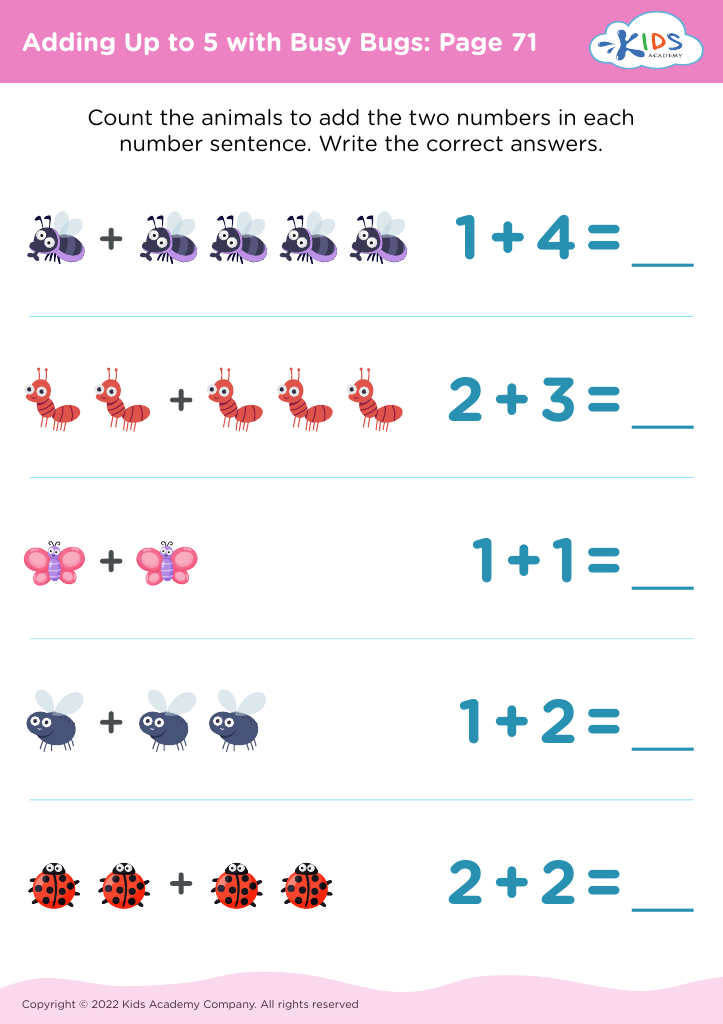Counting objects Addition & Subtraction Worksheets for Ages 4-9
20 filtered results
-
From - To
Discover an engaging collection of Counting Objects Addition and Subtraction Worksheets designed for children ages 4 to 9. Our worksheets foster foundational math skills by helping young learners count, add, and subtract through colorful visuals and interactive activities. These printable resources are perfect for parents and educators looking to enhance math comprehension in a fun and enjoyable way. Each worksheet features varied difficulty levels, catering to different ages and learning stages, ensuring every child can thrive. Encourage your child's mathematical confidence and fluency today with our specially crafted worksheets that make learning addition and subtraction a delightful experience!


Jungle Addition Worksheet
Parents and teachers should prioritize counting objects and basic addition and subtraction for children ages 4-9 for several reasons. First, these foundational math skills are crucial for cognitive development. During this stage, children are at the peak of developing their mathematical thinking, and understanding these concepts sets the groundwork for more complex math later.
Counting objects helps children grasp the concept of quantity and number sense. It promotes critical thinking as they learn to compare amounts, recognize patterns, and enhance their problem-solving skills. Addition and subtraction, initially through hands-on activities, allow children to understand relationships between numbers and develop their reasoning abilities.
Moreover, engaging in counting and basic operations encourages playful learning and complements early literacy skills, enhancing coordination between verbal and numerical understanding. These skills also have real-world applications, aiding in everyday activities like shopping and cooking.
Investing time in these early mathematical experiences fosters a positive attitude toward learning math, reducing future anxiety regarding the subject. In summary, encouraging counting, addition, and subtraction cultivates essential cognitive skills and provides children with the tools they need to succeed academically and confidently in various aspects of life.


















 Assign to My Students
Assign to My Students























